Permaculture companion plants for Kohlrabi
| Image | Name | Data | Description | Actions |
|---|---|---|---|---|
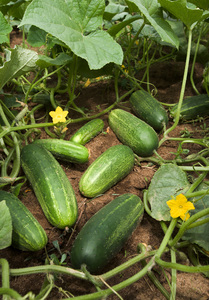
|
Cucumis sativus |
9-11
Annual
Full sun
Moist
Light (sandy), Medium, Heavy (clay)
2
Vines
Fruit, Leaves, Seed
Seed - direct sow, Seed - transplant
1 week after last frost
https://en.wikipedia.org/wiki/Cucumber
Cucurbitaceae
Gurke
50-65
23cm
6.0-6.8
15-30°C (60-85°F)
https://pfaf.org/User/Plant.aspx?LatinName=Cucumis sativus
True
Fruit
Assam, Bangladesh, China South-Central, China Southeast, East Himalaya, Myanmar, Nepal, Thailand, West Himalaya
Alabama, Albania, Andaman Is., Arizona, Arkansas, Austria, Bahamas, Bolivia, Caroline Is., Cayman Is., Colombia, Costa Rica, Cuba, Czechoslovakia, Denmark, Dominican Republic, Ecuador, Florida, Georgia, Gulf of Guinea Is., Haiti, Illinois, India, Jamaica, Kansas, Kazakhstan, Kentucky, Korea, Laos, Leeward Is., Louisiana, Marianas, Marshall Is., Massachusetts, Michigan, Mississippi, Missouri, New Caledonia, New York, Nicaragua, Nicobar Is., North Carolina, North Caucasus, Ohio, Oman, Ontario, Pakistan, Pennsylvania, Pitcairn Is., Puerto Rico, South Carolina, Sri Lanka, Sweden, Tadzhikistan, Trinidad-Tobago, Turkmenistan, Utah, Uzbekistan, Venezuela, Vietnam, Virginia, Windward Is., Zaïre
2-3 weeks before last frost
1 week after last frost
0.9
https://powo.science.kew.org/taxon/urn:lsid:ipni.org:names:292296-1
Oil
Cosmetic, oil
true
|
Cucumber, scientific name Cucumis sativus, is a member of the gourd family. It is native to India and other parts of Asia. Cucumber is a trailing or climbing plant that grows to a height of 5-10 feet. The leaves are dark green and glossy, and the plant produces yellow flowers. The fruit of the cucumber plant is a long, green, edible vegetable with a thin skin. Cucumbers are typically about 6-9 inches long and 2-3 inches in diameter. In terms of growth and cultivation, cucumber plants prefer warm, sunny conditions and well-draining soil. They should be watered regularly, especially during dry periods. Cucumber plants are not winter hardy and should be grown in the summer months in most climates. To cultivate cucumbers successfully, it is important to provide them with adequate space to grow and to support the plants with trellises or other means to keep the fruits off the ground. The plant will develop male and female flowers. You can recognize the female by having a tiny cucumber underneath. Sometimes the plant develops a lot of male flowers first, so be patient. If you don’t see any bees pollinating. Take a male and put it on all the female flowers. Cucumber fruits are edible and can be eaten raw, pickled, or cooked. The skin and seeds of the cucumber are edible, but some people choose to remove the seeds before eating the fruit. Cucumber fruits can be stored in the refrigerator for a few days after harvest. Cucumbers have several uses. In addition to being eaten as a vegetable, they can also be used in a variety of dishes and salads. Cucumber slices are often used as a garnish or as a refreshing addition to beverages. Cucumbers are also commonly used in natural skin care products and are believed to have anti-inflammatory and soothing properties. #### Propagation Direct sow when soil is warm enough in early summer. Sow seeds individually indoors 3-4 weeks before planting outside into warm soil. Use bottom heat if possible. Transplant when plants develop third leaf. #### Medicinal Fruit is depurative, diuretic, emollient, purgative and resolvent #### Links [Cucumber @ West Coast Seeds](https://www.westcoastseeds.com/products/patio-snacker) |
Show
Edit |
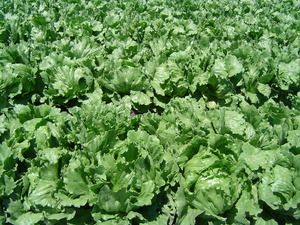
|
Lactuca sativa |
5-9
Annual, Biennial
Full sun, Partial sun/shade
Moist
Light (sandy), Medium
0.9
Herbs
true
Leaves, Seed
https://en.wikipedia.org/wiki/Lettuce
Garden lettuce
Asteraceae or compositae
Blattsalat
Oil
https://pfaf.org/User/Plant.aspx?LatinName=Lactuca sativa
Iraq
Alabama, Antipodean Is., Argentina Northeast, Assam, Austria, Baleares, Baltic States, Bangladesh, Belize, Bolivia, Bulgaria, Burkina, California, Cameroon, Canary Is., Cape Provinces, Cape Verde, Caroline Is., Central European Rus, Chad, China North-Central, Colombia, Connecticut, Corse, Costa Rica, Cuba, Cyprus, Czechoslovakia, Delaware, District of Columbia, Dominican Republic, East European Russia, East Himalaya, Ecuador, Egypt, El Salvador, Fiji, Finland, France, Free State, Germany, Great Britain, Guatemala, Haiti, Hawaii, Honduras, Hungary, Idaho, Illinois, Indiana, Inner Mongolia, Ireland, Italy, Jamaica, Jawa, Kazakhstan, Khabarovsk, Korea, Krym, Lebanon-Syria, Madeira, Maine, Marianas, Marshall Is., Massachusetts, Mauritania, Mauritius, Mexico Southeast, Michigan, Missouri, Myanmar, Nepal, Netherlands, New Guinea, New Hampshire, New Jersey, New Mexico, New York, Nicaragua, Niue, North Carolina, North Caucasus, North Dakota, North European Russi, Northwest European R, Ohio, Oklahoma, Oman, Ontario, Oregon, Pakistan, Panamá, Paraguay, Pennsylvania, Peru, Philippines, Poland, Portugal, Primorye, Puerto Rico, Rhode I., Romania, Réunion, Sardegna, Sicilia, South European Russi, Spain, Sweden, Switzerland, Taiwan, Transcaucasus, Trinidad-Tobago, Tubuai Is., Turkey, Turkey-in-Europe, Ukraine, Uzbekistan, Venezuela, Vermont, Vietnam, Wake I., Washington, West Virginia, Yugoslavia
30cm
https://powo.science.kew.org/taxon/urn:lsid:ipni.org:names:228239-1
Hair, oil, Pest control
|
Lettuce, Lactuca sativa, is a plant native to the Mediterranean region. It has green, elongated leaves that form a loose head. The stem is relatively short and the plant grows to a height of about 8-12 inches. Lettuce is a fast-growing plant, with some varieties able to be harvested in as little as 45 days. Lettuce can be differentiated from similar plants by its elongated leaves and loose head formation. It is also relatively short compared to other leafy green plants like kale and spinach. Lettuce prefers cool temperatures and grows best in full sun or partial shade. It is a hardy plant and can tolerate light frost, but will not survive extreme cold. To cultivate lettuce successfully, growers should ensure that the soil is well-drained and moist, and that the plants are spaced appropriately. Lettuce is edible and the leaves can be eaten raw in salads or cooked. The leaves can also be stored by washing and drying them, and then wrapping them in a damp paper towel before placing them in the refrigerator. Lettuce has a number of uses. It is a popular ingredient in salads and other dishes, and has been used medicinally to treat a variety of ailments, including insomnia and digestive issues. |
Show
Edit |
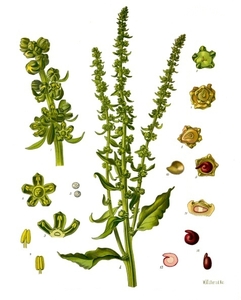
|
Beet |
4-8
Biennial
Full sun
Moist
Light (sandy), Medium, Heavy (clay)
Deciduous
0.9
True
Leaves, Root
Seed - direct sow, Seed - transplant
2 weeks before last frost
https://en.wikipedia.org/wiki/beta_vulgaris
Chenopodiaceae
Rübe
https://pfaf.org/user/plant.aspx?latinname=beta vulgaris craca
6.0-6.8
10°c (50°f)
5-12 days
1.5 cm
20cm
45-65
Beta vulgaris subsp. vulgaris Conditiva Group, beetroot
6-8 weeks before last frost
2-3 weeks before last frost, 6-8 weeks before the first frost
2-3 years
0.25
|
Beet (Beta vulgaris vulgaris), also known as garden beet, red beet, or table beet, is a plant that is native to the Mediterranean region. It is a biennial plant that typically grows to a height of 0.5-1.5 feet and has dark green leaves that are long and rounded, with a smooth or slightly hairy texture. The stem is usually light green in color, and the plant produces small, white or yellow flowers. Beet plants grow best in well-drained soil that is rich in organic matter, and they prefer full sun to partial shade. To cultivate beets successfully, a grower will need to keep the soil moist and weed-free, and may need to thin the plants to allow for proper growth. Beets are edible, and the most commonly eaten part of the plant is the root, which is typically red or purple in color. The leaves of the plant can also be eaten, and are often used in salads. Beets can be stored after harvest by washing and trimming the roots, and then storing them in a cool, dark place. Beets have a number of uses, both culinary and non-culinary. In the kitchen, beets can be cooked in a variety of ways, including boiling, roasting, and grilling. They can also be used to add color and flavor to salads, soups, and stews. In addition to their culinary uses, beets have a number of medicinal properties and have been used to treat a variety of ailments, including indigestion, constipation, and inflammation. Beets are also valuable for their ability to improve soil fertility, as their leaves and roots contain high levels of nitrogen and other nutrients. They can be used as a natural fertilizer, and can also be used as a mulch or as a ground cover to help control weeds. Beets are not particularly attractive to wildlife, but they can provide food for a variety of animals, including deer, rabbits, and birds. Overall, beets are a versatile and valuable plant that is widely cultivated by gardeners and farmers for their edible roots and leaves, as well as for their potential uses in medicine and agriculture. ### Links [How to Grow Beets @ Harvest to Table](https://harvesttotable.com/how_to_grow_beets/) |
Show
Edit |
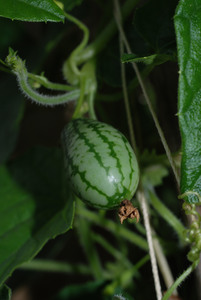
|
Cucamelon |
Annual
Full sun
Vines
Seed - direct sow, Seed - transplant
1 week after last frost
https://en.wikipedia.org/wiki/Melothria_scabra
Cucamelon, Mexikanische mini-gurke
60-70
23cm, 60cm
6.5-7.0
15-30°c (60-85°f)
Mouse melon
Cucurbitaceae
-3
67
Colombia, El Salvador, Guatemala, Honduras, Mexico Central, Mexico Northeast, Mexico Northwest, Mexico Southeast, Mexico Southwest, Nicaragua, Panamá, Venezuela
3-4 weeks before last frost
At last frost
https://powo.science.kew.org/taxon/urn:lsid:ipni.org:names:293320-1
|
Corn, Sunflowers and any other high growing plant, can act as a trellis. #### Propagation Direct sow when soil temperatures reach 15°C (60°F). Plant inside 3-4 weeks before planting outside, and use bottom-heat to help germination. Transplant when plant develop their third true leaf. #### Links [Cucamelon @ West Coast Seeds](https://www.westcoastseeds.com/products/cucamelon) |
Show
Edit |
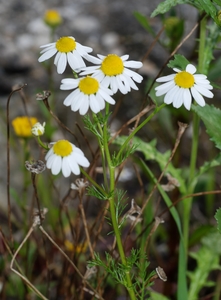
|
Chamomile |
5-9
Full sun
Dry, Moist
Light (sandy), Medium, Heavy (clay)
0.5
0.05
Annual
Herbs
at last frost date
1 week
Matricaria recutita - L., German chamomile, wild chamomile
Kamille
Asteraceae or Compositae
Afghanistan, Albania, Algeria, Altay, Austria, Azores, Belarus, Belgium, Bulgaria, Buryatiya, Canary Is., Central European Rus, China North-Central, China South-Central, China Southeast, Cyprus, Czechoslovakia, Denmark, East Aegean Is., East European Russia, Egypt, Finland, France, Germany, Greece, Hungary, India, Iran, Iraq, Irkutsk, Italy, Kazakhstan, Kirgizstan, Korea, Krasnoyarsk, Kriti, Krym, Lebanon-Syria, Manchuria, Mongolia, Morocco, Myanmar, Netherlands, North Caucasus, Northwest European R, Norway, Pakistan, Palestine, Portugal, Romania, Sardegna, Sicilia, Sinai, South European Russi, Spain, Sweden, Switzerland, Tadzhikistan, Transcaucasus, Turkey, Turkey-in-Europe, Tuva, Ukraine, Uzbekistan, Vietnam, West Himalaya, West Siberia, Xinjiang, Yakutskiya, Yugoslavia
Alabama, Alberta, Arizona, Arkansas, Baleares, Baltic States, Bolivia, British Columbia, California, Colombia, Connecticut, Corse, Costa Rica, Cuba, District of Columbia, Dominican Republic, Ecuador, El Salvador, Ethiopia, Great Britain, Greenland, Guatemala, Gulf States, Honduras, Illinois, Indiana, Iowa, Ireland, Jawa, Juan Fernández Is., Kansas, Kentucky, Magadan, Maine, Mali, Manitoba, Maryland, Massachusetts, Mexico Southeast, Michigan, Minnesota, Mississippi, Missouri, New Jersey, New South Wales, New York, Newfoundland, Nicaragua, North Dakota, North European Russi, Nova Scotia, Ohio, Ontario, Oregon, Paraguay, Pennsylvania, Peru, Poland, Primorye, Québec, Rhode I., Saskatchewan, South Australia, Tennessee, Texas, Tunisia, Uruguay, Utah, Vermont, Virginia, Washington, Wisconsin
https://en.wikipedia.org/wiki/Matricaria_chamomilla
https://powo.science.kew.org/taxon/urn:lsid:ipni.org:names:154715-2
Direct sow in autumn or shortly before latest date of frost
Start seeds indoors 6-8 weeks before last frost date
|
Chamomile is a plant native to Europe, North Africa, and Western Asia. It has a small, daisy-like flower with white petals and a yellow center. The leaves are thin and feathery, and the stem is thin and wiry. Chamomile grows to be about 12-24 inches tall and spreads to about 16-20 inches wide. It grows quickly, producing flowers within a few weeks of germination. Chamomile prefers well-drained soil and full sun to partial shade. It is a hardy plant and can tolerate drought and frost. To cultivate chamomile successfully, it is important to keep the soil moist and well-watered, especially during hot weather. Needs light to germinate. The flowers and leaves of chamomile are edible and can be used in a variety of dishes, including teas and salads. The flowers can also be dried and stored for later use. Chamomile has a number of medicinal properties and has been used to treat a variety of conditions, including anxiety, insomnia, and digestive issues. It is also believed to have anti-inflammatory and antimicrobial properties. In addition to its medicinal uses, chamomile can also be used as a ground cover or as a companion plant in gardens. It can help to repel pests and improve the health of nearby plants. Chamomile is also valued by bees and other pollinators, making it an important plant for maintaining biodiversity in gardens and agricultural areas. #### Links [Chamomile @ Plants For A Future](https://pfaf.org/user/Plant.aspx?LatinName=Matricaria recutita) |
Show
Edit |